Mount Grace Priory
OS grid reference:- SE 449 985
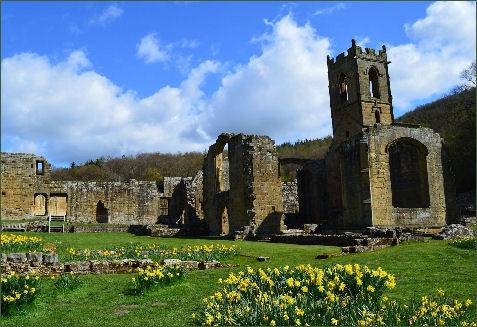 Mount Grace Priory is situated near the village of East Harlsey, on the western edge of the beautiful North York Moors National Park, it is the best preserved of the ten medieval Carthusian houses in England.
Mount Grace Priory is situated near the village of East Harlsey, on the western edge of the beautiful North York Moors National Park, it is the best preserved of the ten medieval Carthusian houses in England.
The priory was founded in 1398 by Thomas Holland, Duke of Surrey, King Richard II's maternal half-brother Thomas, Earl of Kent, the son of the famous Joan, Fair Maid of Kent. Mount Grace was the last monastery to be established in Yorkshire. Richard II was a generous benefactor of the priory.
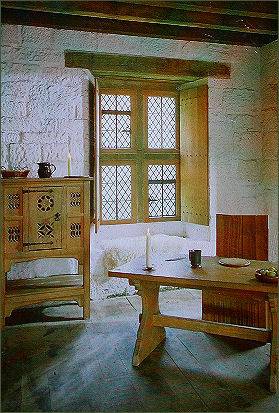 When Richard II was forced to abdicate by his cousin Henry of Bolingbroke, Duke of Lancaster, who usurped the throne as King Henry IV, Thomas Holland along with his uncle, John Holland, Earl of Huntingdon, John Montagu, 3rd Earl of Salisbury and a number of others loyal to King Richard attempted to assassinate the new king at a tournament at Windsor, at New Year 1400, then to free the deposed King Richard and return him to the throne.
When Richard II was forced to abdicate by his cousin Henry of Bolingbroke, Duke of Lancaster, who usurped the throne as King Henry IV, Thomas Holland along with his uncle, John Holland, Earl of Huntingdon, John Montagu, 3rd Earl of Salisbury and a number of others loyal to King Richard attempted to assassinate the new king at a tournament at Windsor, at New Year 1400, then to free the deposed King Richard and return him to the throne.
This "Epiphany Rising" failed when Henry IV was forewarned, failed to appear at Windsor and began to raise an army in London. Kent and Salisbury arrived at the castle with a force of about 400 men-at-arms and archers, but hearing that the king, forewarned, was no longer there, quickly left and Holland was captured and executed. Holland's body was eventually re-buried in the charterhouse that he had founded in 1412. Those executed were subsequently attainted in March; the brother of Kent and the sons of Salisbury and Huntingdon were later restored to their fathers' titles. The attainders were formally reversed in 1461 by a Yorkist parliament.
Following their patron's demise confusion reigned over the Carthusian's claim to the site. Mount Grace was granted to Gisborough Priory, even though a confirmation of the Carthusian claim to the priory was issued in 1440. The dispute was finally put to rest in 1508 when Prior Henry Eccleston obtained a lease to the site from the Augustinians of Guisborough.
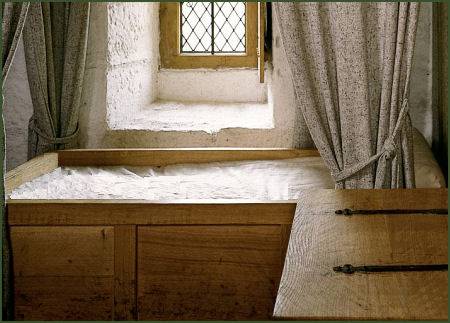 Mount Grace was a fairly small establishment, with space for a prior and twenty-three monks. . The Carthusian monks at the priory lived virtually as hermits. Each occupied a 'two-up, two-down' cell, with a small garden, where they lived, worked and prayed in silence. The Carthusians were a strict order, the monks wore hair shirts and lived their lives in isolation, in imitation of the lives of the early Christian hermits.
Mount Grace was a fairly small establishment, with space for a prior and twenty-three monks. . The Carthusian monks at the priory lived virtually as hermits. Each occupied a 'two-up, two-down' cell, with a small garden, where they lived, worked and prayed in silence. The Carthusians were a strict order, the monks wore hair shirts and lived their lives in isolation, in imitation of the lives of the early Christian hermits.
The priory was disolved in 1539 during the religious reforms which took place in the reign of King Henry VIII. Some of the monks had attempted to avoid taking the oath of supremacy to the king, but, after they were imprisoned, the last prior, John Wilson, handed the keys over to the king's representatives.
Following the Dissoloution of the Monasteries, the priory buildings were sold off and the monastic buildings left to fall into ruin. The entire site was purchased by Thomas Lascelles in 1653. Lascelles converted the guesthouse range into a private dwelling known as Mount Grace House, which now serves as a visitor centre and study centre for the priory.
Much of the priory buildings still survive, the most imposing building is the church, whichstands at the centre of the complex, which includes a Great Cloister with individual cells. To the south of the church is a Lesser Court with quarters for lay brothers, and servants, Further from the central court of claustral buildings is an outer court which includes a stable block, dining hall, granary, and a guest house.
The famous priory stoats inhabit the passages under Mount Grace and are possibly the best-known colony of stoats in Yorkshire and even the British Isles. One of the cells in the Great Cloister has been furnished to provide visitors with an impression of how Carthusian monks would have lived. In the north east corner of the Great Cloister is a small walled garden.
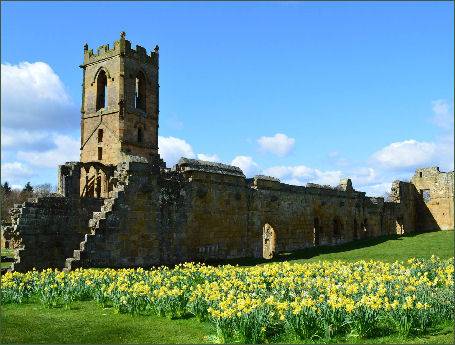
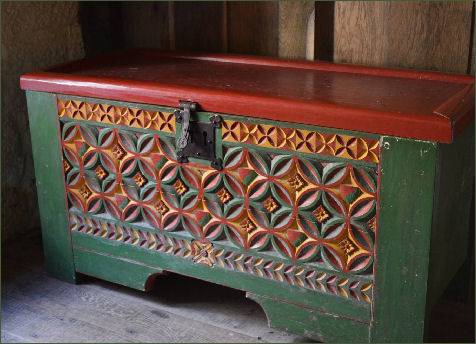
Mount Grace Priory is now owned by the National Trust but under the care of English Heritage. The grounds include a herb garden and ornamental gardens which are particularly attractive in springtime.
Images courtesy of Paul Johnson
Directions
12 miles north of Thirsk; and six miles north-east of Northallerton, near A19. Look out for brown English Heritage direction signs placed approximately half a mile before the turning.
Sat Nav -Postcode: DL6 3JG Latitude: 54.379618 Longitude: -1.311863
Parking -Coin operated pay and display parking for 80 cars, located 150 metres from site via a sloping tarmac drive. The parking fee is refundable to visitors to the Priory on admission.
Abbeys and Churches of Yorkshire
